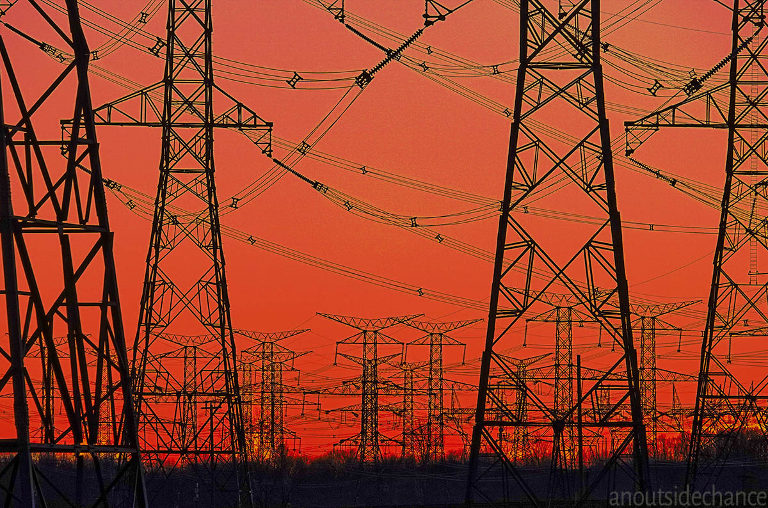My home sits beside one of the world’s great bodies of fresh water, Lake Ontario, and beside one of the precious shoreline marshes that even today offer refuge to more species of wildlife than most of us will ever see.
Yet large-scale industrial transformations are visible in nearly all directions. This post pictures some of these alterations.
Twilight Telegram (click image for full-screen view)
Though their influences have been profound since the day they were built, the Canadian National and Canadian Pacific rail corridors draw relatively subtle lines through local geography. Unless you get stuck waiting for a long train at a level crossing, or have your ears blown out by a nearby diesel horn blast, it’s easy not to notice the railroads.
Angular Momentum
The St. Marys limestone quarry and cement plant makes a more dramatic imposition, with its tall silos, its kiln, its smokestack, and its pier reaching into Lake Ontario.
Auto expressways are virtually inconceivable without vast quantities of concrete, and no single piece of infrastructure changes the landscape here quite so pervasively as route 401, Canada’s busiest highway.
Though There Be No River, Yet Shall Thy Crossings Thereof Be Great
In contrast to the railroad’s slender ribbon, the 401 gobbles vast tracts of land. The tangle of ramps and bridges above constitutes just one T-junction, allowing drivers to connect at full speed to a short new north-south spur (Highway 418).
Another neighbouring industry, the Darlington Nuclear Generating Station, is nearly invisible to people passing on land. But skeins of high-voltage transmission lines, with steel towers jutting into sky, run north, east, and west from the station.
Network Effects
Force Field
Radio Free Moon
The altered landscape continues into Lake Ontario, with the St. Marys pier protruding 650 meters out from shore. The pier allows freighters to dock, carrying away cargos of cement clinker and bringing shipload after shipload of coal and petcoke – some of the carbon-intensive fuels that make our current way of life possible, and which may make life impossible for our descendants.
Plastic Coating
On the direction we are traveling, the concrete and steel of our highways and towers may soon crumble, rust and collapse. The much larger-scale but invisible transformation of our world – elevated atmospheric carbon dioxide levels – will outlast us and will wreak climate havoc for millennia.
Empire of Coal














